Jaws, the original summer blockbuster, turned 50 this month. I’ve been alive for that whole time. And yet I’ve only just noticed that the J in Jaws is a fishhook.
(Previously.)

Americlecticintellectica
Jaws, the original summer blockbuster, turned 50 this month. I’ve been alive for that whole time. And yet I’ve only just noticed that the J in Jaws is a fishhook.
(Previously.)

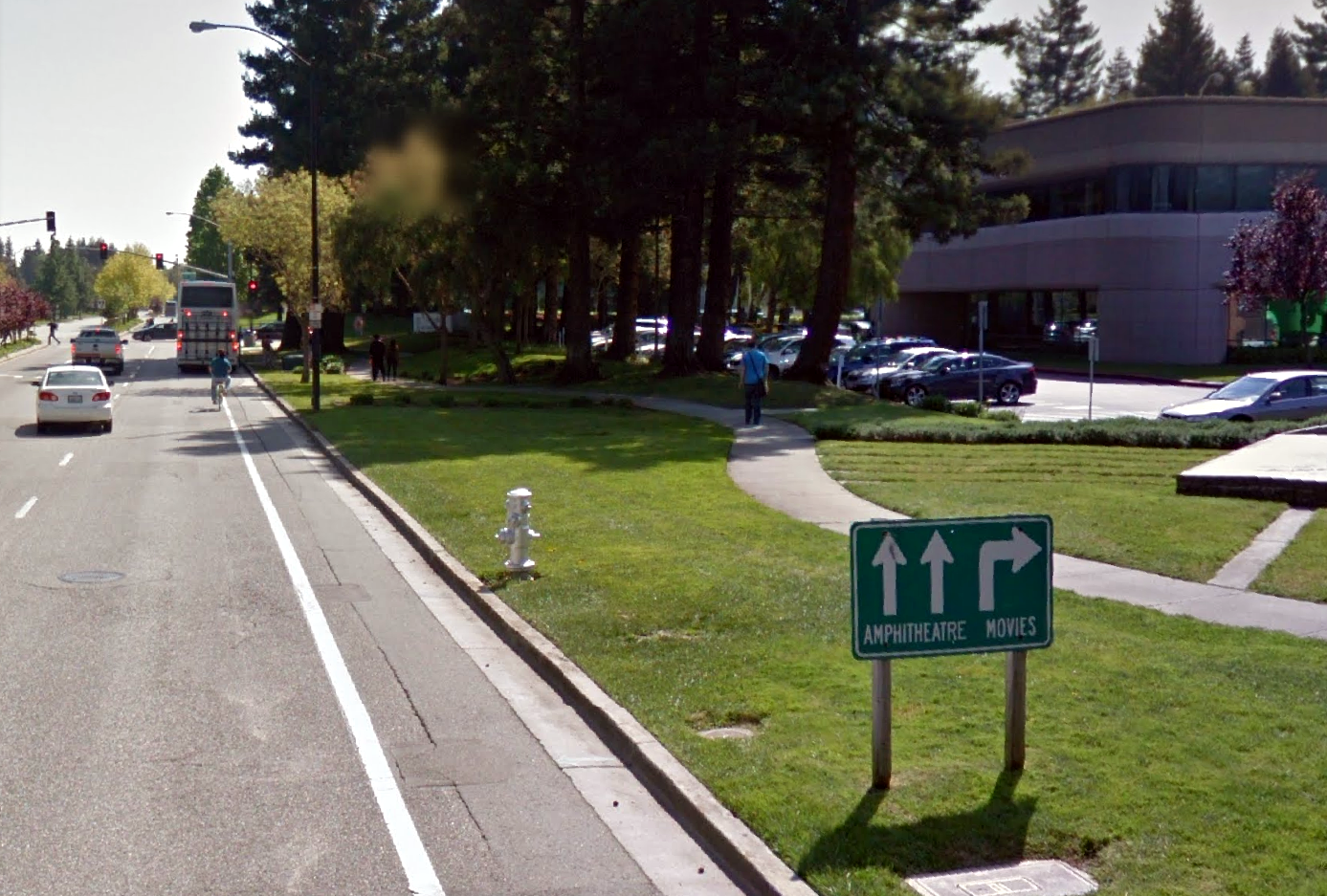
One day, while I was working at Transmeta, the company announced its new President and CEO. A few days later, we found out what his first order of business was: to lay most of us off.
This was just fine with me. Going to work for Transmeta was a mistake. It was much too long a commute and, as should have been obvious from the start but was now crystal-clear, the company wasn’t doing very well. In the scant few months I worked there, they neither used me well nor taught me anything useful. In the end, the main things it did for me were to provide some security and stability while Andrea and I awaited the birth of our first child, and allow me to say that I was Linus Torvalds’ coworker for a while.
Anyway, at a surprise all-hands that morning, they asked us all to go back to our offices and await our turn to be called into a room to find out whether or not we still had our jobs. One by one I watched glum coworkers carrying boxes of their belongings out the door. When my turn came and I got the “bad” news – including that my being laid off was accompanied by a generous severance package – it was all I could do to conceal my glee.
I packed up my things, put them in the trunk of my car, and left. But it was still early in the day, and I was now facing weeks or months of homebound childcare as Andrea and I swapped roles and she became our main breadwinner for a while. I figured I’d better take this one last chance for a little time to myself. So on my way home I pulled off 101 to take in a movie at the Century Cinema 16 in Mountain View. It was K-19: The Widowmaker, of which the best that can be said is that it gave Harrison Ford the chance to replicate the dubious feat that his “movie dad,” Sean Connery, had achieved a decade earlier: portraying a Russian submarine commander, unconvincingly.
Fast-forward six years. I wrap up my (much more rewarding) tenure working at Danger when the company decides to sell itself to Microsoft, and I decline to come along for the ride. Danger wasn’t quite as far a commute as Transmeta had been, but it was still far enough that the same movie theater was only a stone’s throw away. So after I surrendered my security badge on my last day, I returned there for old times’ sake. The movie was better this time too: Cloverfield.
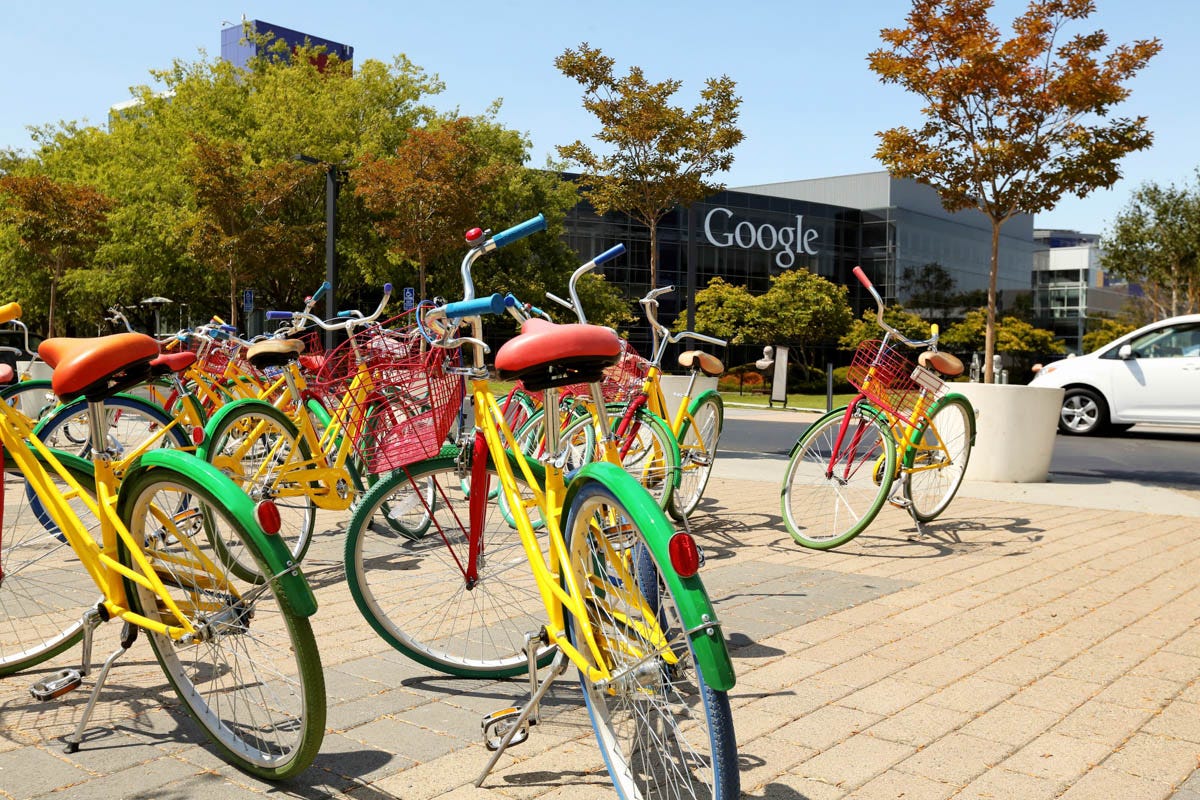
Seven years later, and my time at YouTube draws to a close. YouTube is even closer to home, but my work there does occasionally require me to be at the main Google campus in Mountain View – just a few blocks’ walk (or ride on a multicolored Google bike) from the Century Cinema 16. As I figured it, that movie theater helped launch me from Transmeta into a better gig at Danger, and again from Danger to a still-better gig at YouTube. If I broke this new tradition it would clearly be at my peril. So I arranged to be down at Google HQ in my last week and, before leaving for the last time, stopped at the theater for Amy Schumer’s Trainwreck (which was great).
And the theater did not disappoint: soon after, I began what turned out to be the most-rewarding job of my career to date, becoming a blockchain expert at Chain.
Chain lasted in one form and another until January of this year. (That’s another story, for another time.) And although the geography no longer made sense, I wasn’t about to miss a stop at the theater to mark the final day of Pogo. This time I saw 1917. And I once again credit this with landing me my current job at Coinbase.
At one point he visits Burt Lancaster in a scene from The Killers and finds him apparently hungover, so offers to make him a cup of his “famous java.” He goes to the kitchen, gets a saucepan, and shakes coffee grounds into it from a bag. He shakes and shakes and shakes and shakes and it goes on so long it becomes hilarious.
Finally he tosses in two whole eggs, breaking them open with a fork and stirring them into the coffee grounds, shells and all.
I always thought that the eggs were a bizarre little comic button on the coffee-making sequence. He stirs whole eggs into coffee grounds, haha, the weirdo! But as I learned just recently, this is in fact a common practice in some places.
What’s more, this is often referred to as “Swedish coffee,” and Burt Lancaster’s character in The Killers is “Swede Anderson.” I get it now!
(Previously.)
Back in 2013 I took my family to see a 30th-anniversary showing of Return of the Jedi (at “George Lucas’s favorite movie theater”). Before the show there was a costume contest: kids dressed as Jedi knights, stormtroopers, Yoda. Some women in gold Leia bikinis. After the show there was a panel with three of the Lucasfilm staff who’d worked on the movie in the 1980’s: two people I don’t remember, and Ben Burtt, the Oscar-winning genius sound designer.
Ben Burtt created the hum of lightsabers, the roar of the Millennium Falcon, the beeps and whistles of Artoo Detoo, the pew pew of blasters, and a hundred other sonic inventions besides. If you think about (or ever get to see) what the raw footage of Star Wars sounded like before his effects were added, you’ll quickly understand how much of that film’s wizardry was aural and not visual. Ben Burtt is my hero.
So after Ben Burtt told a bunch of terrific stories from back in the day at Lucasfilm (the other two panelists had little to say), and after the audience broke up, I just had to approach Burtt to shake his hand and tell him this:
“In 1977 I smuggled a tape recorder into the movie theater and recorded Star Wars. I listened to it over and over the way other kids listened to their favorite records. I have to tell you: the visual effects don’t hold up so well nowadays, but in all this time no one has ever surpassed the sound design.”
Burtt thanked me and, playfully immodest, agreed. He told me that, as a kid, he too smuggled a tape recorder into a movie theater once to capture the audio of his favorite film: Goldfinger! Great minds…
Much has been written about the many failings of Batman vs. Superman: Dawn of Justice, the joyless and senseless misuse of some of the world’s favorite characters, a film whose desperation to be the springboard for a procession of billion-dollar movies was palpable. I wouldn’t feel the need to pile on if it were merely a bad movie; that would be a simple shame and there wouldn’t be much more for me to say that others haven’t already said better. But it isn’t merely a bad movie: it’s nearly a great one. And that makes it worse, and worth writing about.
[spoilers follow]
This could and should have been a movie about fear and bravery. The thesis of this hypothetical better movie is right there in the ungodly mess of the actual movie: as Batman thrashes Superman, he growls, “You’re not brave. Men are brave.” Meaning, of course, that bravery requires fear. No deeds, even heroic ones, are brave if not performed in the face of fear. Batman cannot imagine Superman feeling fear, being (heretofore) invulnerable.
But fear is something Bruce Wayne understands all too well. His fear in that alley, watching his parents be murdered, was so profound it led him on a lifelong quest to master and overcome that fear, to never feel it again; to be so strong that fear could not touch him; to bend fear to his own purposes, reflect it back onto those who would dish it out.
He succeeded. Bruce Wayne has not felt debilitating fear his whole adult life… until the arrival of Superman, a potential threat he has no hope of defeating; something he cannot be stronger than. And now fear begins to work on Bruce Wayne the way it has worked on America these past many years: he prepares to betray his bedrock principles, to make a lethal preemptive strike in order to feel safe again. (Yes, I’m referring to Batman’s refusal to kill as a bedrock principle. Changing Batman into someone who doesn’t casually blow away bad guys like he’s James Bond is just one of the many changes this movie would need in order to improve.)
Less principled, but no less afraid, is Lex Luthor. He is the dark-mirror version of Bruce Wayne. He too has a deep-seated need to feel powerful. He too uses his vast wealth to create devices that enhance his own abilities. And he, too, doesn’t like the feeling that Superman gives him. It is telling (or in a better version of this movie, it would be) that Batman and Luthor are united in their goals and methods for much of the film. We all know that Luthor is evil. Now look at what fear has done to our beloved hero Batman: it is turning him into Lex Luthor.
Batman surprises Superman with a variety of Kryptonite-based weapons. With determination and a tremendous effort, Batman overpowers Superman. He is close to delivering the killing blow when, at the last moment, he redeems himself, turns away from the dark side, and spares Superman. Why does he? In the actual film, it’s because of a dumb coincidence: Bruce and Clark both have moms named Martha, and (in a highly contrived and out-of-character bit of dialog) Superman catches Batman off-guard by uttering that name out of context. That coincidence, the linchpin of this crucial turning point, is the reason audiences have to endure yet again the murder of the Waynes at the beginning of the movie—so that with his dying breath, Thomas Wayne can remind us of his wife’s name. In the better film that they didn’t make, Superman, facing his end, still begs Batman to save his mother, and this triggers the realization that Superman does feel fear after all—not fear for his own skin, but fear for the ones he loves. Far from posing a threat to humanity, Superman has that essential connection to humanity that Batman himself had nearly lost. Batman knows firsthand how love turns to fear—a much better reason to stage the Wayne murder again. For him, fear turned to power, which then turned to cruelty. It is an act of bravery for Batman to abandon cruelty in spite of his fear of Superman, and turn back in the direction of love.
Finding righteous common cause, together Batman and Superman overcome the real threats: those like Lex Luthor whose fear leads them to believe, and whose power allows them to convince others, that sacrificing the principles of justice will somehow make everyone safer. There but for the remaining spark of compassion in his heart nearly went Bruce Wayne.
This would have been a better movie. But even more than that, it’s a story that needs to be told to fearful, powerful America, which in its recent history has lurched towards cruelty and has not yet remembered: it’s supposed to be the home of the brave.
Update
My friend Bart thought this sounded like it would depend on interior monologue and asked (on Facebook) how I would stage it. My reply:
I would begin the film not with the Wayne murders but with a fantasy sequence where young Bruce Wayne disarms Joe Chill and saves his parents. When Martha scolds him for taking a dangerous chance, Bruce grins and tells her, “I had to save my mother.” Cut to the actual scene: Bruce terrified in the aftermath of the murders, his parents dead on the ground, a kindly cop telling him he has to be brave.
Later in the movie, adult Bruce has one of his usual nightmares. As Batman, he battles through a bunch of bad guys to rescue… his mother! Who again scolds him for taking dangerous chances. Batman grins (which is suitably weird under the cowl) and tells her, “I had to save my mother.” The dream image of Martha becomes bloody and Bruce wakes up with a start.
Finally, during the confrontation with Superman, it’s Superman’s turn to plead, “I have to save my mother!”
This might not mean much to the Batman we meet at the beginning of the film, who has turned cynical and cruel after twenty years of crimefighting in Gotham with little to show for his efforts. But beginning early in the story, Bruce Wayne has a series of tantalizingly brief meetings with an exotic, strikingly self-possessed woman named Diana, and for the first time in decades, his obsession with fighting crime begins to yield to an entirely different kind of fixation.
In fact, Diana Prince has Bruce Wayne’s number. He’s the reason she came to Gotham. He is an open book to her, as all men are to a certain kind of woman. She has watched as Batman has begun to lose himself in his dark mission and decided to take matters into her own hands. In her calculated short meetings with Bruce (during which she playfully teases him with phrases like “crusader” and “detective,” making him wonder what she knows) she probes, and deftly adjusts, his psyche. Her questioning leads Bruce to realize that he has dwelt on the same single memory of his mother for all these years: variations on the scene in the alley. Diana helps to unlock memories of earlier, happier times. Bruce remembers that before fear came love.
So when Superman tells him, “I have to save my mother!” it resonates in multiple ways. “There are other Kryptonians here?” Batman asks. “No… my human mother. She adopted me. She raised me. And she’s in trouble.” “What’s her name?” “Martha.”
Batman couldn’t ask for a clearer sign. Superman is not a threat to humanity. He’s a friend and a partner.
…It’s possible I’ve given this more thought than I really should. But at least in this version of the story, Wonder Woman uses her compassion (to “stop a war with love”!) and isn’t simply a “generic warrior woman” (c.f. What Film and TV Adaptations Don’t Get About Wonder Woman).
I get asked about my favorite movies less often than you might think, so when the question does come up I’ve been in the habit of shrugging it off with a simple, “There’s too many to choose from.” Recently however I was inspired to give the question a proper go and I came up not with a single favorite (because there’s too many to choose from), but with this impressionistic list of movies I would watch at the slightest encouragement no matter how recently I’d seen it, which strikes me as the closest category to “favorite movie” that I can actually answer. Undoubtedly this list is incomplete, and possibly there are films here that I will take off the list some day, but without further ado, and in no particular order (indeed, in a deliberately randomized order) here they are:
Benji; The Matrix; The Incredibles; Die Hard; Zero Effect; Singin’ in the Rain; Memento; Jaws; Risky Business; Silverado; Casablanca; Safety Not Guaranteed; Repo Man; Waitress; The Karate Kid (1984); Being John Malkovich; The Parallax View; Body Heat; Tangled; Eternal Sunshine of the Spotless Mind; The Adventures of Robin Hood (1938); The Natural; The Guns of Navarone; A Hard Day’s Night; Apollo 13; Field of Dreams; My Favorite Year; To Live and Die in L.A.; Pulp Fiction; Koyaanisqatsi; Ferris Bueller’s Day Off; Roman Holiday; Groundhog Day; Broadway Danny Rose; The Great Train Robbery (1979); Brick; The Rocketeer; It’s a Wonderful Life; The Sting; Mary Poppins; Ocean’s Eleven (2001); 1776; Scott Pilgrim vs. the World; Shakespeare In Love; The Silence of the Lambs; Get Shorty; Time After Time; Kiss Kiss Bang Bang; Pirates of the Caribbean: The Curse of the Black Pearl; Goldfinger; Jacob’s Ladder; The Game; The Iron Giant; Hopscotch; North by Northwest; The Godfather; The Goodbye Girl; Pocketful of Miracles; Secretary; Amadeus; Swingers; Airplane!; Sleepless In Seattle; Trading Places; Animal House; The Brothers Bloom; What’s Up Doc?; Crimson Tide; Aliens; Bedazzled (1968); After Hours; Fight Club; Silver Linings Playbook; Almost Famous; Enchanted; The Shawshank Redemption
A handful of movies, like Raiders of the Lost Ark, Star Trek II: The Wrath of Khan, and The Adventures of Buckaroo Banzai Across the 8th Dimension, are in their own special pantheon. And then there’s Star Wars. My relationship to Star Wars is… complicated.
A British film about Americans in Mexico. That seemed odd. But it didn’t stop me from watching 2010’s Monsters on Netflix recently, and enjoying it.

It’s six years after a NASA probe to Jupiter’s moons crash lands on its return to Earth, “infecting” an area of Northern Mexico near the U.S. border with samples of alien life, which thrive there and multiply, growing huge and destructive. The U.S. has erected an enormous wall along its Mexican border and its military makes regular incursions across it to suppress the creatures and limit their spread. Our two main characters have to make it back to the U.S. while traveling dangerously near, and eventually through, the infected zone. Their journey has a vérité feel and is full of suspense, with a few moments of terror and some interesting character development. By the end I found it compelling enough to go online and see what opinions others had written about it.
I was disappointed by what I found. Without exception the reviews and opinions that I read evaluated Monsters as a conventional monster movie — that is, as a mere shocker — and by that metric many critics found it lacking in terms of horror and body count and creature biology and so on, though everyone commended the guerrilla filmmaking techniques and how far the tiny budget was stretched for the sake of producing credible special effects. The principal filmmaker, Gareth Edwards, is now being talked about as a hot new talent for directing sci-fi epics.
All of which was missing the point. Not one writer commented on the glaringly obvious subtext, the very reason the film was made and the answer to why a British filmmaker chose Mexico as his setting and Americans as his characters: it’s a story about the failure of America to adapt to a changing world.
[Spoilers follow.]
Tonight I finished a project I’ve been working on for years: reading all of the Harry Potter stories to my family, all seven volumes, all 4,167 pages.
Tonight I finished a project I’ve been working on for years: reading all of the Harry Potter stories to my family, all seven volumes, all 4,167 pages. Correction: I read almost all of them. Jonah took over for one chapter a little while ago when my voice was too hoarse, like Sam to my Frodo.
I am so, so happy that I prohibited the boys from seeing any of the movies before reading the books; and I feel so, so sorry for anyone who’s only ever seen the movies and thinks they know the stories. Naturally there are a lot of great scenes and there is a lot of rich detail that never made it into the movies, but that is true with any novel adapted for the screen. Also as with any adaptation, some of the changes made by the filmmakers were improvements on those unavoidable parts of the books that were not great or rich.
But the films do worse than leave out scenes and detail — they get key characters wrong. (Or at least, numbers 1 through 6 do. None of us has yet seen parts 7a or 7b.) The film Dumbledore may be a powerful wizard, but he has none of the book Dumbledore’s warmth, deep wisdom, or mischief. And Harry Potter may stir himself to heroic action on film when the need arises, but there is no sense of the fierceness of purpose to which he is so often roused in the books.
I’m sure countless Harry Potter fan sites have debated these things endlessly so I won’t belabor them, but I can’t let it go before giving one example to illustrate my complaint. Spoilers ahead.
Continue reading “Cover to cover (to cover to cover to cover…)”
Here in a nutshell is why Steven Spielberg was the wrong choice for bringing Stanley Kubrick’s unfinished project A.I. to the big screen.
Here in a nutshell is why Steven Spielberg was the wrong choice for bringing Stanley Kubrick’s unfinished project A.I. to the big screen.
A Google image search for “Kubrick stare” turns up:
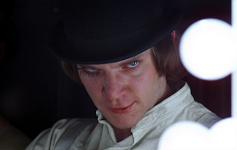
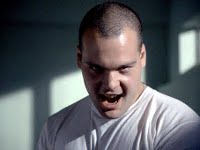
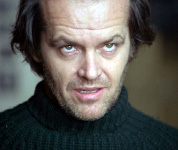
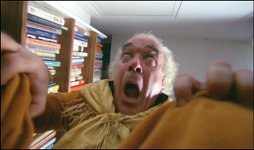
A Google image search for “Spielberg stare” turns up:
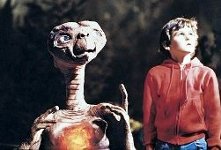
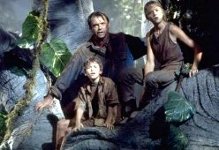
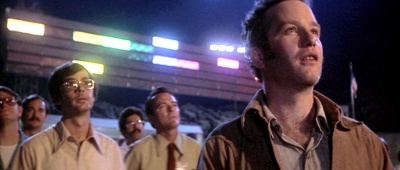
Jonah and Archer, ages 9 and 7, recently had occasion to watch Bill and Ted’s Excellent Adventure. They thought it was hilarious and quoted it around the house for a few days.
A week or so after they saw it there was this conversation between them:
Archer: What was Bill and Ted’s favorite number again?
Jonah [authoritatively]: Sixty-eight.
Archer [puzzled]: Sixty-eight?
Jonah: Yep. Sixty-eight. …It might have been seventy-eight.
Archer: I don’t get what’s funny about that.
Jonah: Me neither. But it was definitely either seventy-eight or sixty-eight.